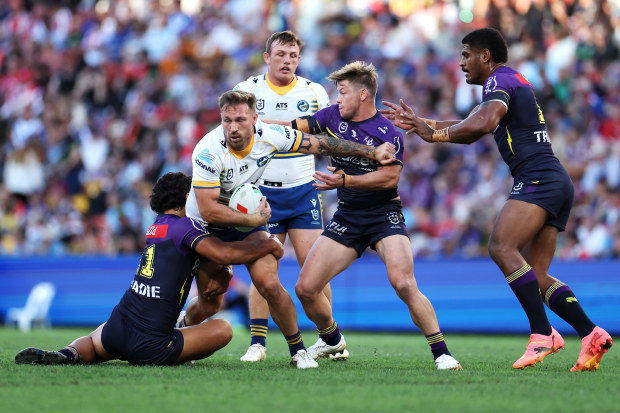
Live sports broadcasts 해외축구중계 are an exhilarating way to bring real-time action to audiences worldwide. However, with the unpredictability of live events, broadcasters must be prepared to handle unforeseen interruptions smoothly and professionally. These interruptions could be caused by technical glitches, weather disruptions, or even unexpected on-screen moments that need to be addressed quickly. In this article, we’ll explore how to deal with these interruptions effectively, ensuring the audience remains engaged, and the broadcast continues seamlessly.
Understanding the Importance of Preparedness in Live Sports Broadcasts 고릴라 로또 분석기
Why Unforeseen Interruptions Are Inevitable in Live Sports
Sports broadcasts 고릴라 로또 분석기 often take place in dynamic environments, where anything can happen. Whether it’s a sudden equipment failure, a power outage, or an unexpected injury on the field, live sports 고릴라 로또 분석기 are full of surprises. Understanding that interruptions are part of the experience allows broadcasters to remain calm under pressure and focus on minimizing the impact of these events on the audience.
The Impact of Interruptions on Viewers
Interruptions during live sports broadcasts can disrupt the flow of the game and affect viewer engagement. A broadcast break, especially during crucial moments of a game, can lead to frustration among viewers. It is crucial to address these interruptions as quickly and efficiently as possible to maintain the integrity of the broadcast.
Types of Unforeseen Interruptions in Live Sports Broadcasts
1. Technical Issues and Equipment Failures
One of the most common interruptions is technical issues, including sound problems, video feed failures, or even issues with broadcasting software. These glitches can leave viewers unable to hear commentators, view key moments, or even experience the game itself.
2. Weather Interruptions
Weather conditions, such as rain delays or lightning storms, can force the suspension of outdoor sports events. These types of interruptions present unique challenges for broadcasters, as they may need to fill the air with commentary or pre-recorded segments until the event resumes.
3. Injury Timeouts or Medical Emergencies
Unforeseen medical emergencies or player injuries can halt the flow of the game. In such cases, broadcasters must remain sensitive and informative while providing updates without sensationalizing the situation.
4. Unpredictable On-Field Events
Unpredictable incidents such as fights between players or spectators rushing the field may occur during a broadcast. These moments need immediate attention, with broadcasters balancing commentary on the incident while ensuring the audience doesn’t miss key game moments.
Strategies to Manage Technical Issues in Live Sports Broadcasts
Have Backup Equipment Ready
The best way to deal with technical issues is to anticipate them. Always have backup equipment such as extra microphones, cameras, and broadcasting tools available. If a technical failure occurs, switching to the backup system ensures minimal downtime. Testing all equipment before the broadcast starts is crucial to identifying any potential issues.
Implementing Redundant Systems
Redundant systems are designed to ensure that when one system fails, another automatically takes over. For example, having a backup power supply ensures that the broadcast continues uninterrupted in case of a power outage. A secondary internet connection can prevent a broadcast from going off the air due to network failures.
Training and Support for On-Site Technicians
On-site technicians should be well-trained to quickly troubleshoot common technical problems. Providing ongoing training in resolving issues like audio delay, camera malfunction, or streaming problems ensures that interruptions are dealt with swiftly.
Maintain Communication with the Control Room
Constant communication between the control room and on-site broadcasters is essential. If there’s a technical issue, the control room can direct broadcasters to continue with alternative content while the issue is fixed.
Handling Weather Interruptions and Delays
Keep the Audience Informed
When weather causes a delay or interruption, it’s essential to keep the audience informed about the situation. Use graphics or updates to explain the current weather conditions and the expected resumption of the game. If the event is postponed indefinitely, update viewers on the next steps and when to expect coverage.
Leverage Pre-Recorded Content
When weather delays occur, use pre-recorded content, such as game highlights, interviews with players, or historical footage, to keep the audience engaged. Offering additional analysis, behind-the-scenes footage, or expert commentary can help fill the void until the live event resumes.
Engage Viewers on Social Media
Use social media platforms to update viewers in real-time. Posting updates, behind-the-scenes content, or even interactive polls during a weather delay helps maintain engagement. Encourage viewers to follow your social media channels for live updates on the delay and resumption of the broadcast.
Managing Injuries and Medical Emergencies
Maintain Sensitivity
In case of an injury or medical emergency, the primary focus should be on providing respectful and compassionate commentary. Avoid speculating on the severity of the injury unless official statements are released. It’s crucial to allow medical professionals the space they need to address the situation.
Provide Timely Updates
If there is a significant injury, it’s important to provide timely updates once available. If the player is taken off the field, offer background information about the player’s career, past performances, and potential impact on the game. Stay informative, but avoid sensationalism.
Create a Calm Environment
In times of uncertainty, it’s important to stay calm and offer clear, factual commentary. The tone should be composed, and unnecessary drama should be avoided to ensure the broadcast maintains its professionalism and respects the situation at hand.
Handling On-Field Unpredictable Events
React Quickly, But Be Professional
Unpredictable events such as fights, fan disruptions, or unexpected stoppages can throw a live broadcast off balance. In these situations, it’s important to react quickly but professionally. Maintain control of the narrative, and provide updates without sensationalizing the incident. If the situation calms down, shift back to the regular game commentary.
Limit Distractions
If a dramatic on-field event distracts from the main game, consider cutting to a commercial break or showing highlights from earlier in the game to maintain focus. Return to the game as soon as the situation is under control.
Be Transparent About What’s Happening
If a major event occurs, it’s essential to provide transparency to the audience. Explain what happened, how it may impact the game, and what the next steps are. Viewers appreciate transparency and professionalism in these unpredictable situations.
Best Practices for Minimizing Interruptions in Live Sports Broadcasts
Preparation and Contingency Planning
Preparation is key to handling interruptions smoothly. Develop a detailed contingency plan that addresses common interruptions, such as technical failures, weather delays, or medical emergencies. Ensure that everyone involved in the broadcast, from the broadcasters to the technical crew, is familiar with these plans.
Establish Clear Roles and Communication
During a broadcast, communication is crucial. Ensure all team members, including analysts, commentators, technicians, and producers, are aware of their roles and responsibilities. A clear line of communication ensures that any interruptions can be addressed swiftly without confusion or delay.
Invest in Real-Time Analytics and Monitoring
Using analytics tools to monitor stream quality, engagement, and feedback during the broadcast can help broadcasters quickly identify issues before they escalate. Real-time monitoring allows the team to adjust the stream or troubleshoot technical issues promptly.
Conclusion
Unforeseen interruptions during live sports broadcasts are inevitable, but with the right strategies, they can be managed effectively. By preparing for technical issues, handling weather delays gracefully, maintaining professionalism during medical emergencies, and managing unpredictable on-field events, broadcasters can ensure that the show goes on smoothly. Through careful planning, strong communication, and quick decision-making, broadcasters can minimize the impact of interruptions, keeping the audience engaged and the broadcast on track.


